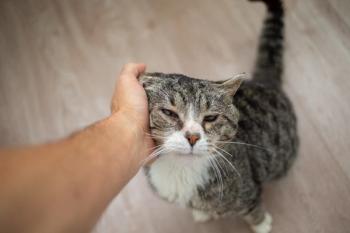
Mpox: protections for veterinary professionals and patients
As this zoonotic disease becomes a global concern, what does this mean for veterinary professionals?
Mpox, formerly known as monkeypox, is the most important orthopoxvirus for public health since smallpox was eradicated in 1980, according to the World Health Organization (WHO).1 As of this week, The Africa Centers for Disease Control and Prevention (Africa CDC) has officially declared the ongoing outbreak of mpox a Public Health Emergency of Continental Security (PHECS)—the first such declaration by the agency since its inception in 2017.2
While mpox has been documented in other parts of the world and continues to be a rising global threat, humans and animals can be at risk. How can veterinary professionals protect themselves, clients and patients from infection?
Protecting patients
Although zoonotic diseases can be transmitted between animals and humans, there is limited research about mpox and pets. According to the CDC, humans can potentially spread the disease to pets through close contact such as petting, hugging, sharing sleeping areas, and sharing food. However, since the global outbreak began in 2022, there have been no confirmations of pets or animals with the disease.3
Pets with mpox can possibly present to the clinic with the following symptoms3:
- Rash
- lethargy,
- lack of appetite
- coughing
- bloating
- nasal and/or eye secretions or crust
- fever
- pox-like skin sores (may initially resemble a pimple or blister first)
A client or staff member with a confirmed case of mpox should avoid all contact with animals including wildlife and companion animals, to avoid spreading the virus. Veterinary professionals can instruct infected clients to have a friend or family member in a separate home care for the at-risk animals until recovery.
Clients whose pets had close contact with someone confirmed with mpox and have a new rash or 2 other symptoms should have their pet tested. If a pet appears sick 21 days after contact with a person probably or confirmed to be infected with mpox, instruct them to call their veterinary clinic. Veterinarians can then notify the state public veterinarian or state animal health official to help get high-risk pets tested. The pet should also be separated from other animals and people and have limited direct contact for at least 21 days, fully recovered, or the veterinary team clears them.
Protecting veterinary teams
Because the disease is zoonotic, veterinary teams should consider any mammal susceptible to the disease. Veterinary professionals should follow CDC and WHO guidelines, as well as be on the lookout for symptoms associated with mpox such as cough, fever, conjunctivitis, respiratory signs, and lack of appetite. These symptoms are most likely present in clinics because of other illnesses, and milder cases of mpox have shown fewer symptoms.4
Any animals coming to the clinic with suspected mpox should not be allowed in the waiting rooms of veterinary clinics. Veterinary teams should also limit treatment to a single exam room and limit the number of staff treating the potentially infected patient. This can prevent the disease from spreading to other people or animals in the clinic. Once a pet has left, the exam room should be cleaned and disinfected, along with any other areas in the clinic where the animal could have been. The CDC recommends that any veterinary professional who decides to treat animals with suspected mpox should use infection control precautions to protect themselves, teams, clients, and other animals and wear personal protective equipment.3
Veterinary teams should also contact their local health department for guidelines on waste disposal, but in general, a dedicated trashcan should be used for all potentially contaminated waste, with the exception of animal waste. Any animal waste should be flushed down the toilet, if appropriate for the species and clinic plumbing system. Bedding should be put in puncture-resistant bags and disposed of as recommended by the local health department. No waste should be disposed of outside or in landfills because it could expose wild animals and pests such as mice or rats to the disease.5
dvm360 and its sister publication, Contagion, will continue to report on mpox and provide important updates for veterinary professionals, clients, and patients in the future.
Reference
- Mpox. World Health Organization. April 18, 2023. Accessed August 16, 2024. https://www.who.int/news-room/fact-sheets/detail/monkeypox
- Africa CDC Declares Mpox A Public Health Emergency of Continental Security, Mobilizing Resources Across the Continent. Africa CDC. August 13, 2024. August 14, 2024.
https://africacdc.org/news-item/africa-cdc-declares-mpox-a-public-health-emergency-of-continental-security-mobilizing-resources-across-the-continent - Information for veterinarians. Center for Disease Control and Prevention. Updated June 12, 2024. Accessed August 16, 2024.
https://www.cdc.gov/poxvirus/mpox/veterinarian/index.html#:~:text=Veterinarians%20who%20decide%20to%20treat,direct%20contact%20with%20infected%20animals . - McCafferty C. Monkeypox: what veterinarians should know. DVM 360. Published June 2, 2022. Accessed August 16, 2024.
https://www.dvm360.com/view/monkeypox-what-veterinarians-should-know - For Public Health Veterinarians and Animal Health Officials. Center for Disease Control and Prevention. Updated June 10, 2024. Accessed August 16, 2024.
https://www.cdc.gov/poxvirus/mpox/veterinarian/animal-officials.html
Newsletter
From exam room tips to practice management insights, get trusted veterinary news delivered straight to your inbox—subscribe to dvm360.






